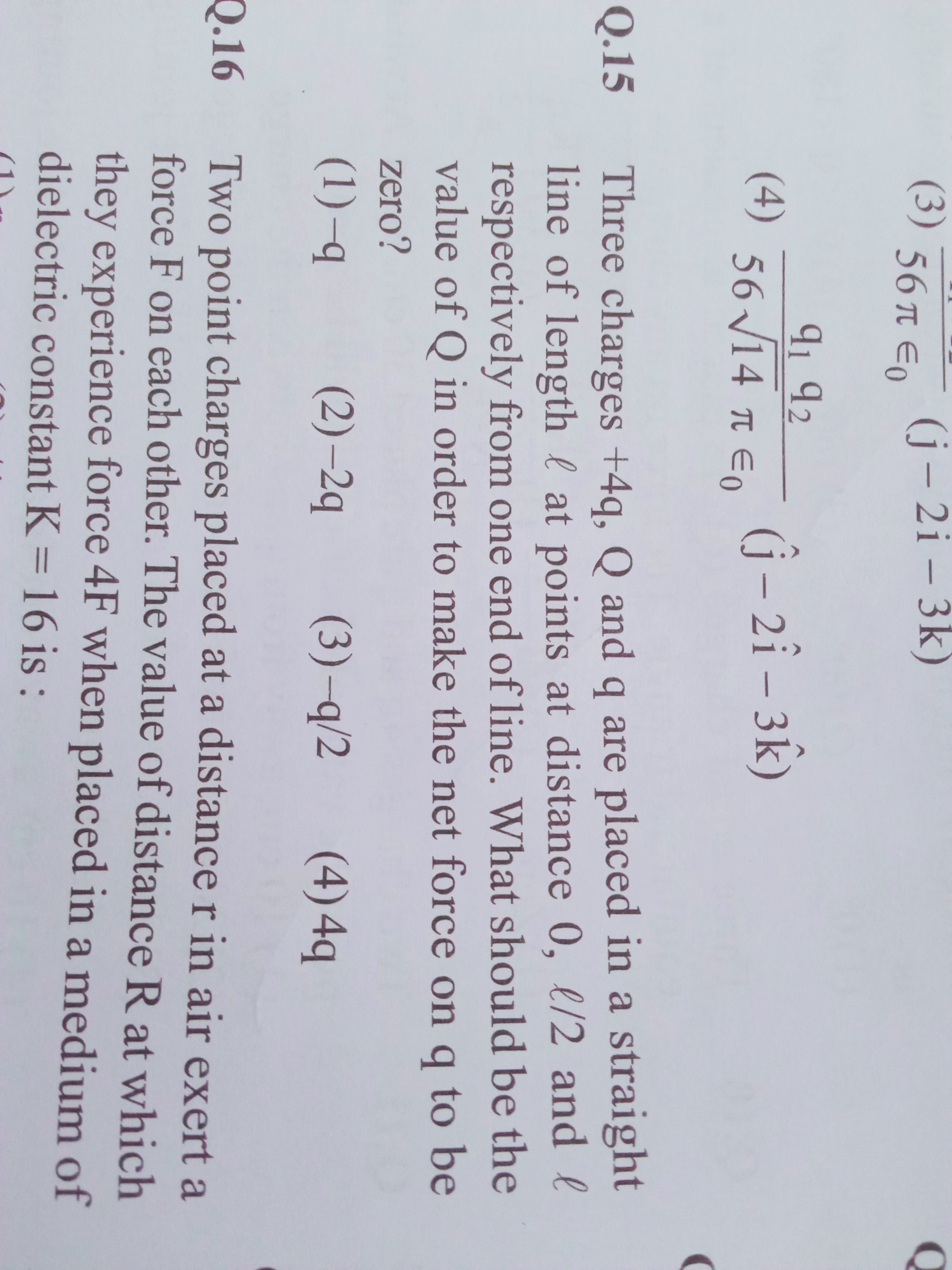Question
Question: Three charges +4q, Q and q are placed in a straight line of length $l$ at points at distance 0, $l/2...
Three charges +4q, Q and q are placed in a straight line of length l at points at distance 0, l/2 and l respectively from one end of line. What should be the value of Q in order to make the net force on q to be zero?

-q
-2q
-q/2
4q
-q
Solution
Let the three charges +4q, Q, and q be placed on the x-axis at positions x=0, x=l/2, and x=l, respectively. We want to find the value of Q such that the net force on the charge q (at x=l) is zero.
The net force on q is the vector sum of the force on q due to +4q and the force on q due to Q.
-
Force on q due to +4q: The charge +4q is at x=0 and q is at x=l. The distance between them is l. Both charges are positive, so the force is repulsive and acts in the positive x direction (away from +4q). F4q,q=kl2(+4q)(q)=l24kq2, where k=4πϵ01. This force is in the positive x direction.
-
Force on q due to Q: The charge Q is at x=l/2 and q is at x=l. The distance between them is l−l/2=l/2. FQ,q=k(l/2)2Qq=kl2/4Qq=l24kQq. The direction of this force depends on the sign of Q. If Q is positive, the force is repulsive (away from Q, in the positive x direction). If Q is negative, the force is attractive (towards Q, in the negative x direction).
For the net force on q to be zero, the forces F4q,q and FQ,q must be equal in magnitude and opposite in direction. Since F4q,q is in the positive x direction, FQ,q must be in the negative x direction. This requires Q to be a negative charge.
The net force on q is Fnet,q=F4q,q+FQ,q (treating forces as vectors along the x-axis). Let the positive x direction be the positive direction for forces. Fnet,q=+l24kq2+l24kQq. We set the net force to zero: l24kq2+l24kQq=0. Factor out the common term l24kq: l24kq(q+Q)=0. Since k=0, q=0, and l=0, we must have: q+Q=0. Q=−q.
This value of Q is negative, which is consistent with our requirement that the force FQ,q must be attractive (in the negative x direction) to balance the repulsive force F4q,q.
